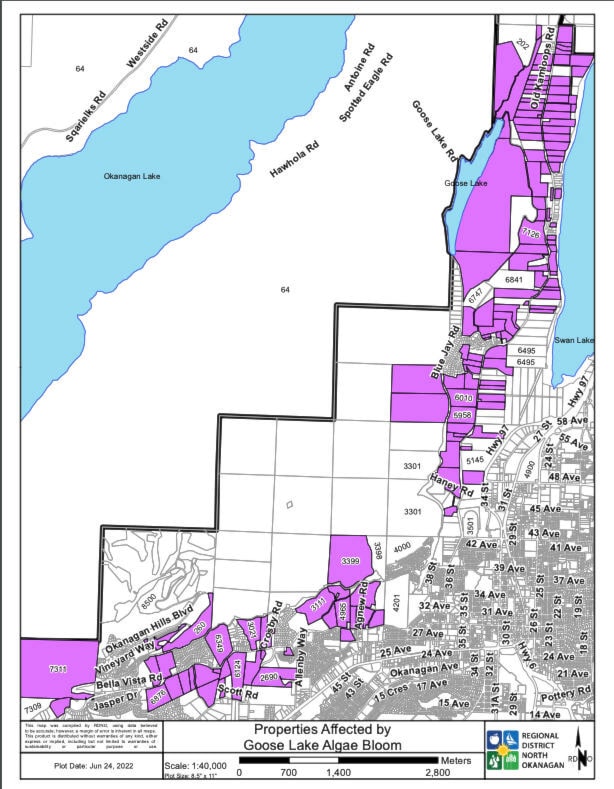Officials with the Okanagan Indian Band and Regional District of North Okanagan (OKIB, RDNO) continue to monitor a pair of algae bloom situations.
Blue-green algal or cyanobacteria blooms can produce toxins that are harmful to people, pets, ande livestock. The blooms will sometimes make the water look like “thick pea soup or paint,” form floating clumps or scum that may have strong, unpleasant odours.
The First Nations Health Authority (FNHA) says it’s impossible to know if toxins are present in the water without testing.
OKIB says on its website, courtesy of the FNHA, there is a reported presence of an algae bloom in Deep Creek, and that the FNHL recommends residents and visitors in the area be aware.
Avoid all direct contact with any algae bloom; avoid swimming and other recreational activities that comes in contact in the areas where the bloom is present; do not consume drinking water directly from Okanagan Lake; keep pets and livestock out of the water; avoid consuming fish or internal organs of fish that appear unhealthy.
Should you come in contact with the algae bloom, rinse your body with clean water as soon as possible.
Greater Vernon Water (GVW) advised customers supplied by the Goose Lake non-potable water source on Aug. 2 that the presence of cyanobacteria, a potentially harmful blue-green algae, was identified in the lake through routine sampling.
The numbers of algae present continue to indicate that the water may be potentially harmful or toxic if consumed by animals and livestock. GVW recommends an alternate source for animal use. Boiling water does not remove blue-green algae toxins.
In Goose Lake, the occurrence of a harmful algae bloom is common and GVW is not always able to turn it off or guarantee timely treatment. At present, the water source will stay on.
It is the customer’s responsibility to provide a safe water supply for animals and livestock and ensure on-site non-potable water sources are clearly labeled on the property. Non-potable signage can be downloaded for free from www.rdno.ca/agwater (under the Non-Potable Water tab).
READ MORE: Questions dive into Vernon recreation funding dilemma
READ MORE: Kalamalka resort proposal back at Lake Country council
roger@vernonmorningstar.com
Like us on Facebook and follow us on Twitter.
